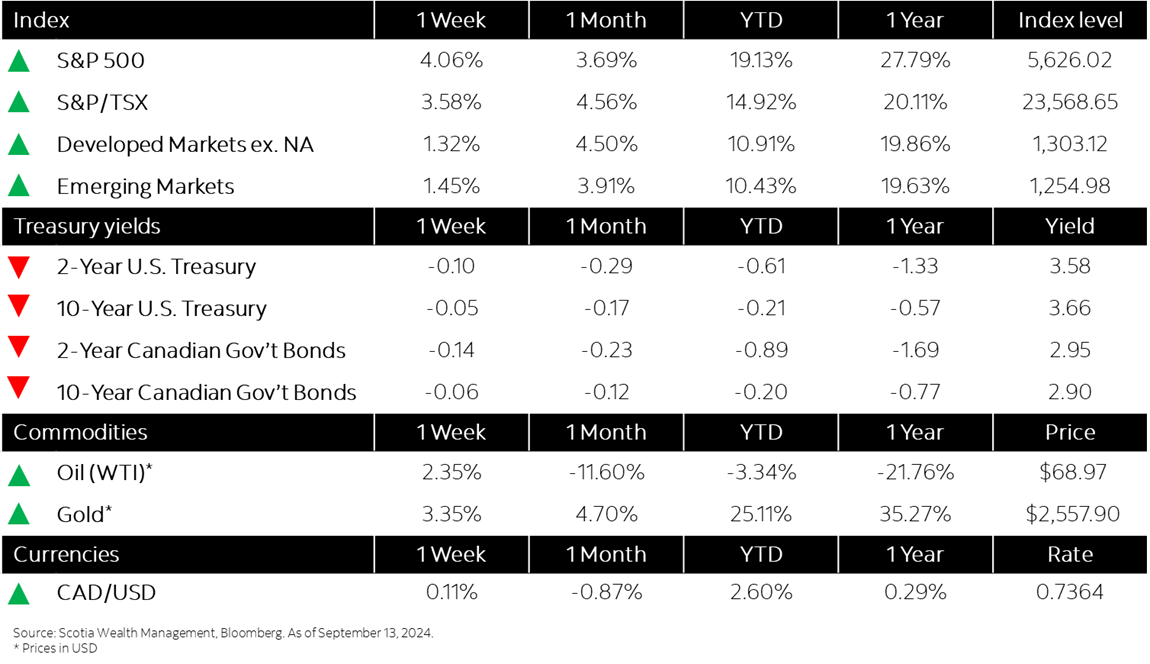
Market Watch: September 13
This week’s highlights
- Equity markets rally ahead of expected rate cuts
- Fixed income steady amid inflation data and central bank moves
- BoC says global trade disruptions could hinder inflation fight
- U.S. headline inflation extends cooling streak, core rises
- ECB cuts interest rates for second time in three months
- In the news: Fed dials back proposed banking regulations
Week in review
Equity markets rally ahead of expected rate cuts



